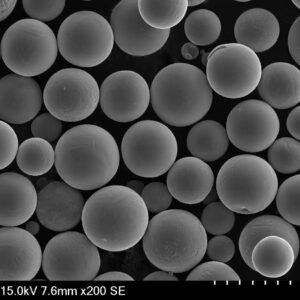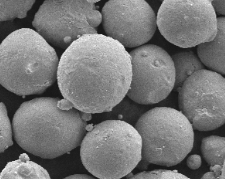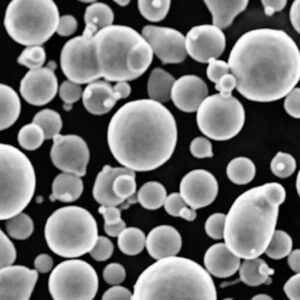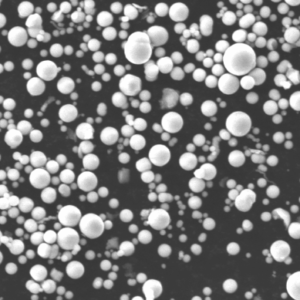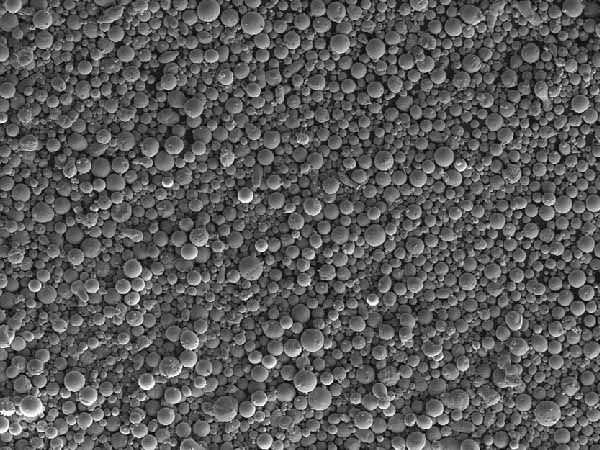MoS2 Powder, also known as molybdenum disulfide powder, has earned a strong reputation as a material known for its excellent lubricating properties, high resistance to extreme temperatures, and chemical stability. From aerospace to automotive, this versatile compound finds its way into numerous industries. But what exactly makes MoS2 powder so special? How is it composed, and how can it be utilized? Let’s dive into the details.
Overview of MoS2 Powder
Molybdenum disulfide (MoS2) is a transition metal dichalcogenide and a naturally occurring mineral often mined as the ore molybdenite. Its unique lamellar structure, consisting of stacked layers of molybdenum atoms sandwiched between sulfur atoms, is the key to its exceptional lubricating ability. When used as a lubricant, MoS2 powder minimizes friction and wear, even in high-stress environments, thanks to the sliding layers within its structure.
Key Features of MoS2 Powder
- Chemical Formula: MoS₂
- Appearance: Dark grey or black powder
- Lubricating Properties: Superior friction-reducing capabilities
- Temperature Resistance: Operates well in temperatures from -185°C to 450°C
- Applications: Aerospace, automotive, industrial machinery, electronics, etc.
- Metal Powder Models: There are multiple grades and models based on particle size, purity, and intended use.
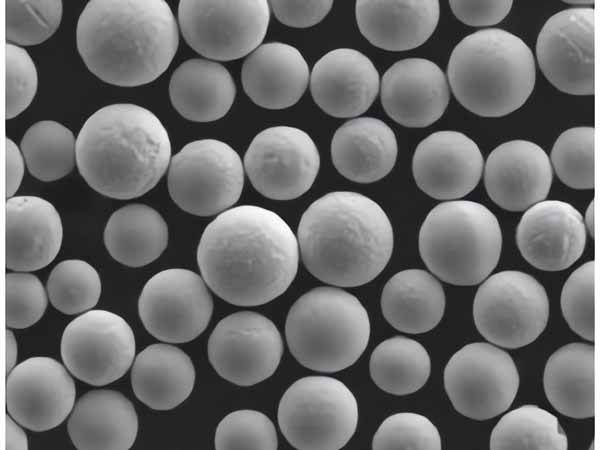
Composition of MoS2 Powder
MoS2 powder is composed of molybdenum and sulfur atoms arranged in layers. Each molybdenum atom is bonded to two sulfur atoms, creating a stable hexagonal crystalline structure. The weak Van der Waals forces between layers allow them to slide over each other easily, giving MoS2 its lubrication properties.
| Element | Atomic Weight | Proportion in MoS2 Powder |
|---|---|---|
| Molybdenum (Mo) | 95.94 g/mol | 59.94% |
| Sulfur (S) | 32.06 g/mol | 40.06% |
Characteristics of MoS2 Powder
MoS2 powder’s unique characteristics make it a go-to material for specific industries that require high-performance lubrication or resistance to extreme conditions.
Key Characteristics:
- High Lubrication Efficiency: The layered structure minimizes friction under pressure.
- Thermal Stability: Resistant to decomposition at temperatures up to 450°C.
- Chemical Inertness: Does not easily react with chemicals, making it ideal for corrosive environments.
- Non-Toxic: While some metal powders pose risks, MoS2 is generally safe when handled properly.
- Low Electrical Conductivity: In contrast to graphite, MoS2 is not a good conductor of electricity, making it ideal for use in semiconductor devices.
- Anti-Oxidation Properties: Offers excellent resistance to oxidation.
Top 10 Specific Models of MoS2 Powder
MoS2 powders come in a variety of models, each designed for specific applications based on purity, particle size, and intended function. Here are 10 of the most notable models:
| Model Name | Purity | Particle Size | Best For |
|---|---|---|---|
| MoS2-Nano 99% | 99% | <100nm | Nano-lubrication and electronics |
| MoS2-850 | 98.5% | 3-5µm | High-load mechanical systems |
| MoS2-Grade F | 99% | 1-2µm | Aerospace and defense applications |
| MoS2-700 | 99% | 5-7µm | Automotive industry for high-stress bearings |
| MoS2-Crystalline | 99.5% | 0.8-1.2µm | Ultra-high vacuum systems |
| MoS2-Industrial | 97% | 10-20µm | General machinery lubrication |
| MoS2-Superfine | 99% | 0.5µm | High-performance greases and oils |
| MoS2-Precision | 98% | 1-5µm | Electrical contact applications |
| MoS2-Micronized | 99.8% | <1µm | Thin-film coatings |
| MoS2-Grade A | 99.9% | 3-4µm | Semiconductor and electronic devices |
Each of these models is tailored to specific industries and applications, and their different particle sizes and purity levels impact their performance in varied environments.
Advantages of MoS2 Powder
MoS2 powder has many advantages compared to other lubricants or materials. Its layered structure and chemical properties make it uniquely suited for high-performance tasks, whether you’re working with extreme temperatures or heavy loads.
Why MoS2 Powder Is Better:
- Superior Lubrication: MoS2 reduces friction better than graphite or PTFE.
- High Temperature Resistance: Performs reliably even in environments exceeding 400°C.
- Chemical Stability: It remains unaffected by corrosive chemicals, making it ideal for demanding industrial environments.
- Extreme Pressure Tolerance: Ideal for use in gearboxes, engines, and other heavy machinery.
- Environmentally Friendly: Unlike lead-based or other toxic lubricants, MoS2 is non-toxic and eco-friendly.
However, like all materials, MoS2 has some limitations:
Disadvantages:
- Cost: MoS2 powder can be more expensive compared to alternatives like graphite.
- Limited Electrical Conductivity: It’s not ideal for applications requiring high conductivity.
- Oxidation Sensitivity at High Temperatures: Above 450°C, MoS2 tends to oxidize and lose efficiency, making it less ideal for extremely high-temperature applications.
Applications of MoS2 Powder
MoS2 powder is used across various industries due to its diverse properties. From industrial machinery to the semiconductor industry, MoS2’s applications are vast.
Common Applications for MoS2 Powder:
| Application | Industry | Purpose |
|---|---|---|
| Bearings and Bushings | Automotive and Aerospace | Reduces wear and extends lifespan |
| Gaskets | Industrial Machinery | High-pressure sealing and lubrication |
| Dry Film Lubricants | Aerospace and Defense | Lubrication in extreme conditions |
| Semiconductor Devices | Electronics | Acts as a semiconducting material |
| Greases and Oils | Automotive, Industrial | Enhances lubrication properties |
| Vacuum Coatings | Precision Engineering | Reduces friction in vacuum conditions |
| Sprays and Coatings | General Maintenance | Easy application for surface friction reduction |
| Engines and Gearboxes | Automotive and Machinery | Improves efficiency and reduces wear |
| High-Pressure Valves | Oil and Gas | Provides chemical resistance and lubrication under pressure |
| Machining and Cutting Tools | Metalworking | Enhances tool lifespan and reduces wear |
MoS2 Powder Grades, Specifications, and Standards
Different industries require different grades of MoS2 powder. Depending on purity, particle size, and additional additives, MoS2 powders are classified into several categories.
| Grade | Purity Level | Particle Size | Industry Standards |
|---|---|---|---|
| Nano Grade | >99% | <100nm | ASTM F1396-92 |
| Technical Grade | 97%-98% | 1-5µm | ASTM B386-03 |
| Lubricant Grade | >98% | 3-7µm | ASTM D2266 |
| Superfine Grade | >99% | 0.5µm | ISO 12103-1 |
| Crystalline Grade | 99.5%-99.9% | 0.8-1.2µm | Mil-PRF-46010E |
Suppliers and Pricing of MoS2 Powder
Pricing and availability of MoS2 powder vary based on purity, quantity, and supplier. Below is a snapshot of some reputable suppliers and approximate pricing for various grades of MoS2 powder.
| Supplier Name | Country | Grade | Price Range (USD/kg) |
|---|---|---|---|
| Sigma-Aldrich | USA | Nano Grade, 99% | $150 – $250 |
| American Elements | USA | Crystalline, 99.5% | $100 – $220 |
| Molyworks Materials | USA | Lubricant Grade, 98% | $70 – $120 |
| Noah Technologies | USA | Superfine, 99% | $180 – $300 |
| Zochem | Germany | Industrial Grade, 97% | $60 – $90 |
| SkySpring Nanomaterials | USA | Nano MoS2, 99.9% | $200 – $400 |
| Graphene Supermarket | USA | Nano Grade, 99.8% | $180 – $350 |
| Shanghai Metals | China | Technical Grade, 97% | $40 – $80 |
| Nanografi | Turkey | Precision Grade, 99% | $160 – $280 |
| Micron Metals | USA | Grade A, 99.9% | $220 – $450 |
Pros and Cons of MoS2 Powder
| Pros | Cons |
|---|---|
| High Lubrication Efficiency: Excellent for reducing friction in high-stress environments. | Oxidizes at high temperatures: Above 450°C, MoS2 tends to degrade. |
| Temperature Stability: Works in both low and high-temperature settings. | Higher cost: Can be more expensive than other lubricants. |
| Chemical Resistance: Handles corrosive chemicals with ease. | Limited Electrical Conductivity: Not ideal for electrically conductive applications. |
| Eco-friendly: Non-toxic and safe to use in various environments. | Special Handling: Requires care in storage to prevent moisture absorption. |

FAQ
| Question | Answer |
|---|---|
| What is MoS2 powder used for? | It’s primarily used as a lubricant, especially in high-stress or extreme environments. |
| How does MoS2 powder reduce friction? | The layered structure allows the sheets of molybdenum disulfide to slide over each other, reducing friction. |
| Can MoS2 powder be mixed with oils? | Yes, it can be added to oils and greases to enhance their lubricating properties. |
| Is MoS2 powder safe to handle? | Generally, yes, but proper protective equipment is recommended to avoid inhaling the fine particles. |
| How long does MoS2 lubrication last? | The duration depends on the application, but it typically outlasts many other lubricants. |
| Does MoS2 work at high temperatures? | Yes, it works up to 450°C, but it starts to oxidize beyond that temperature. |
| What industries use MoS2 powder? | Aerospace, automotive, industrial machinery, semiconductors, and oil and gas. |
| Is MoS2 conductive? | No, MoS2 is a poor conductor of electricity, making it ideal for certain electronic applications. |
| How is MoS2 powder made? | It is mined from molybdenite and then processed through various stages of purification and milling. |
| Can MoS2 powder be used in food processing? | No, it is not recommended for food-related applications. |
MoS2 powder is a fascinating and versatile material, offering solutions for industries that need reliable, high-performance lubrication and resistance to extreme conditions. Whether you’re working on heavy-duty machinery or delicate electronic components, MoS2 powder can deliver the performance you need—just remember to choose the right grade for the job!


